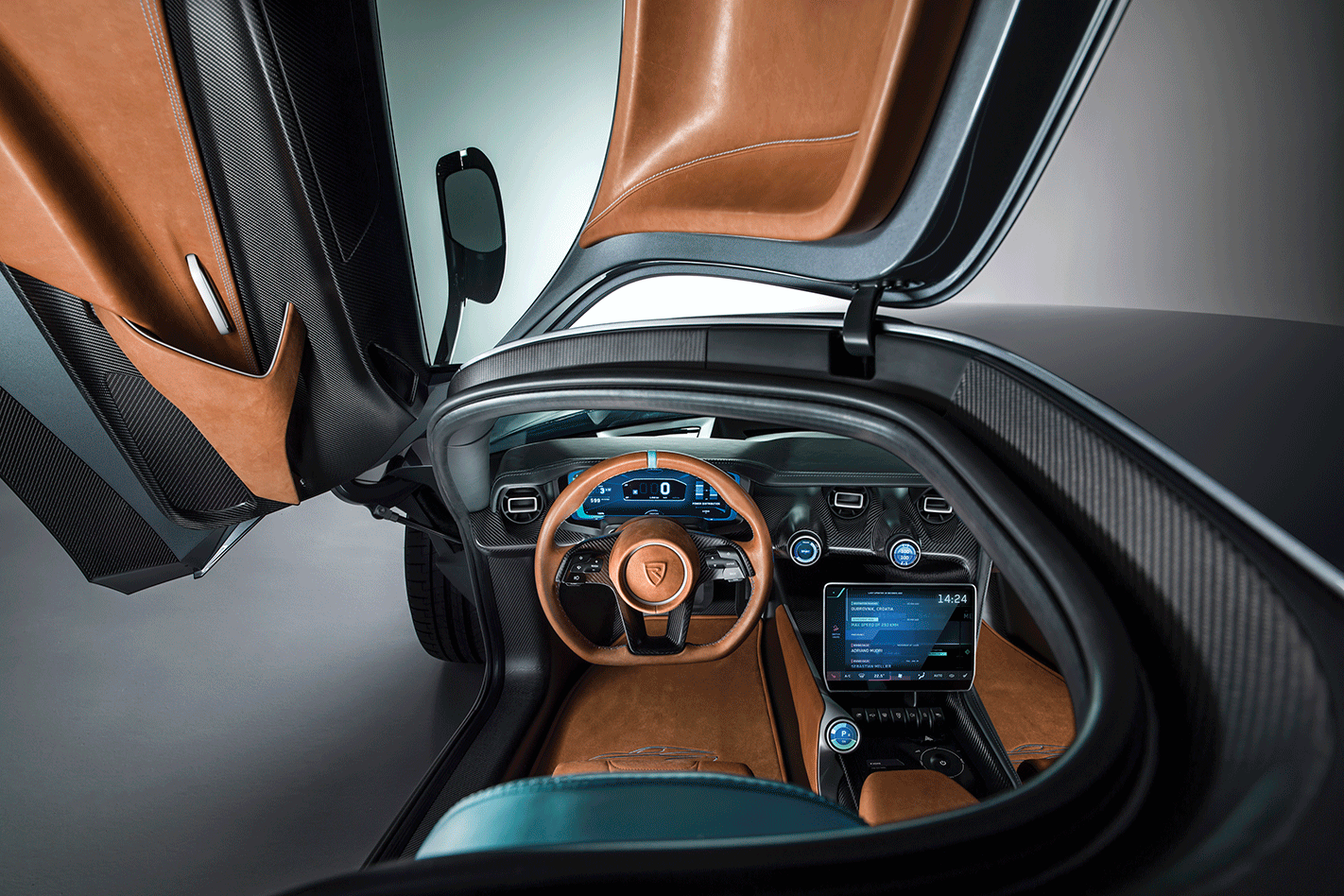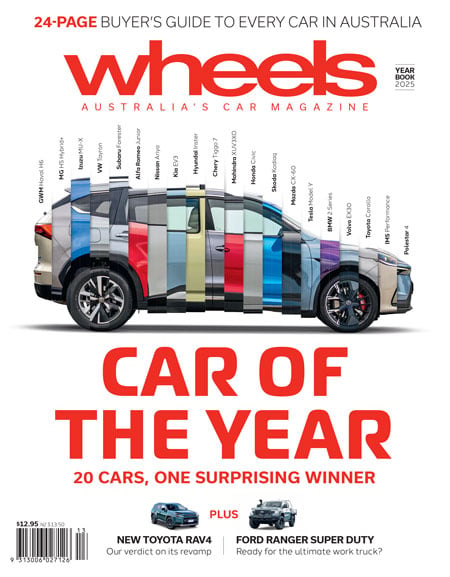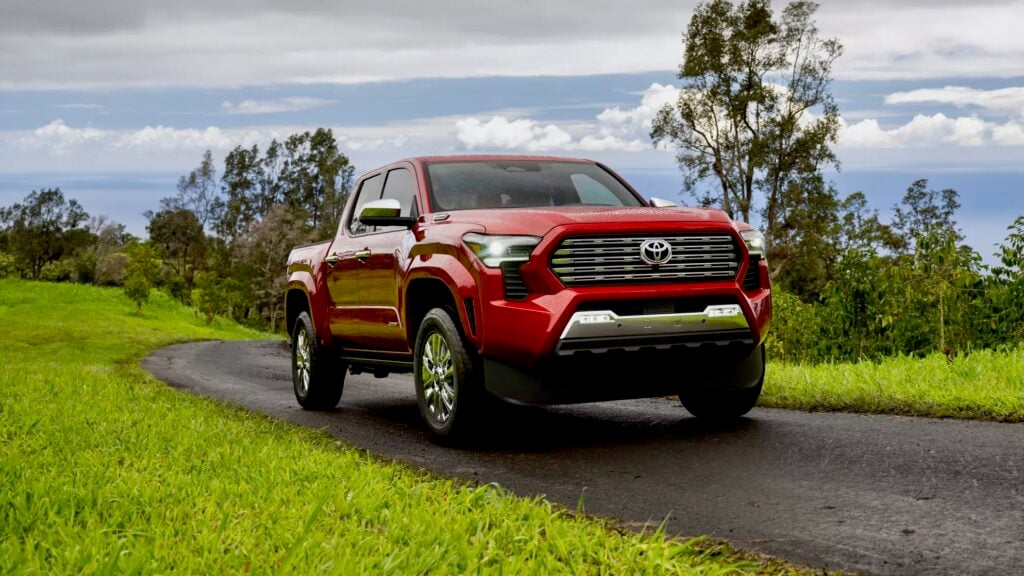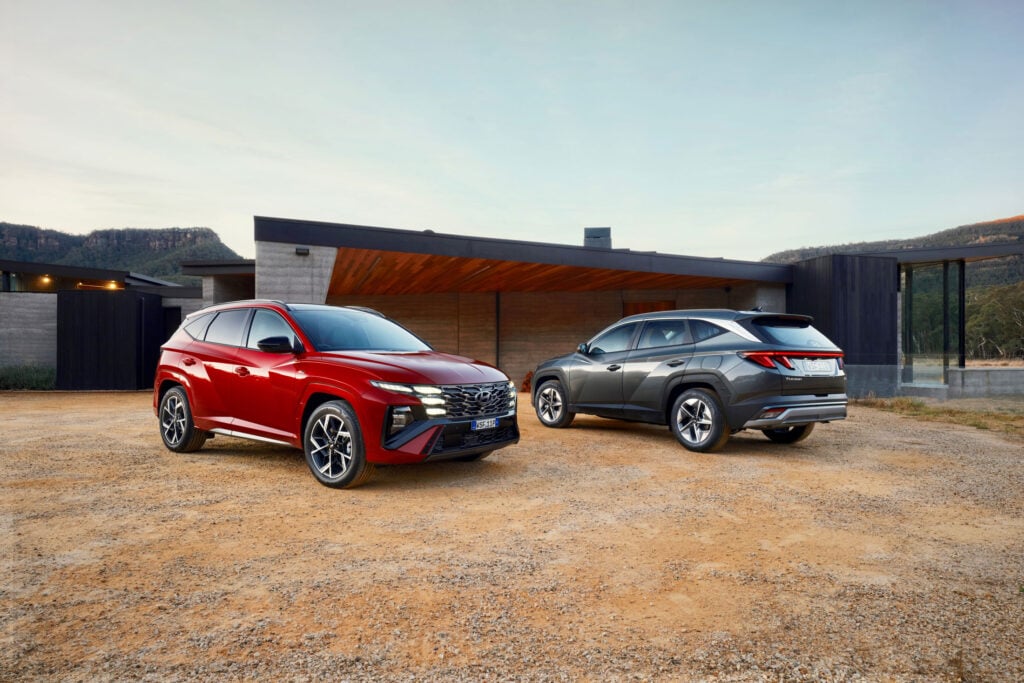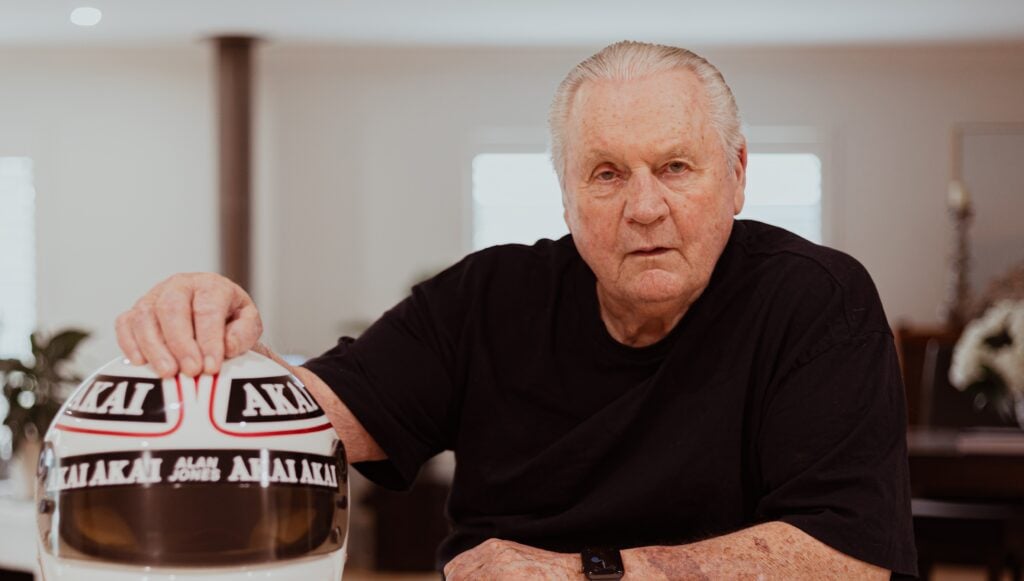Why is Porsche pouring millions of dollars into a relatively unknown car maker in Croatia? It’s a question that recently drew us to the industrial outskirts of Zagreb, the capital of a nation best known for spotty dogs, medieval HBO blockbusters and stunning coastlines. It’s the home of Rimac, a company born from an old E30 BMW that failed to proceed and an admiration of Tesla (the man, not the company) with a generous smattering of YouTube viral magic to bubble things along.
Days before the 2019 Frankfurt motor show, Porsche confirmed it had lifted its stake in Rimac to 15.5 percent, deputy chairman of the executive board Lutz Meschke cryptically saying: “We quickly realised that Porsche and Rimac can learn a lot from each other.”
The unassuming factory on the outskirts of Croatia’s capital almost goes unnoticed by Google. Nondescript warehouses are surrounded by the occasional plot of unkempt grass and weeds. But follow the signs around the back of an industrial estate and professionalism sneaks in, with R-badged flags waving in a gentle breeze. A deep blue hue surrounding the top of the blocky building contrasts the dull sky and glass panels peppered with pictures of cars, the only clue to something special within.
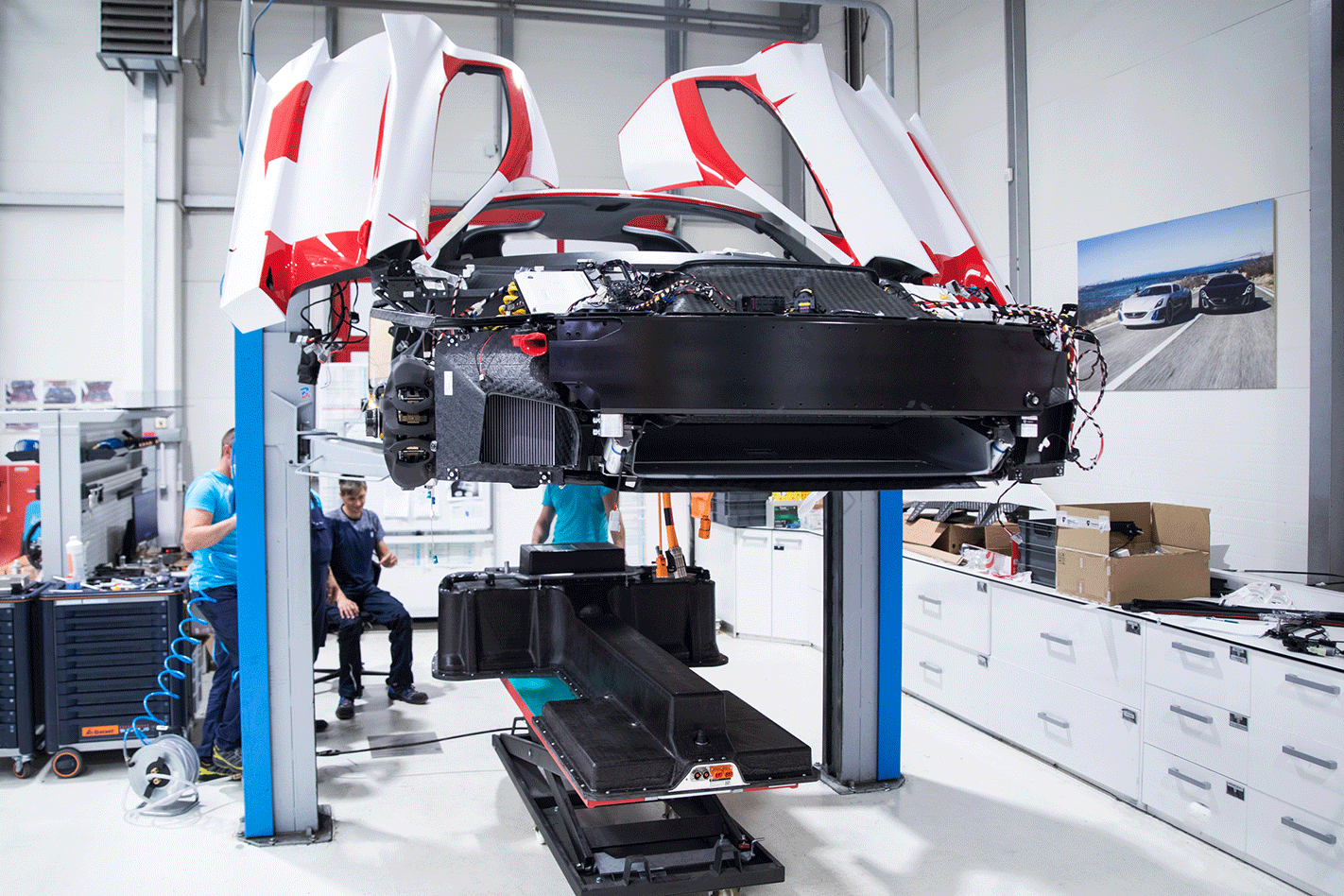
The car park is devoid of any such exotica. There’s a Euro-grey sea of Opels, Volkswagens, the occasional Mercedes-Benz; a couple of Teslas with charging cables snaking from them. Not a single Rimac, which must make it the only car factory where at least some of the machines conceived within aren’t dotting the car park.
Blame it on volumes. Since producing its first vehicle in 2016, Rimac has completed only five cars; about 0.0036 of a car per employee per year. Even Ferrari manages almost three cars per employee per year, for a total approaching 10,000. A wave of productivity means another three are in various stages of construction during my visit, body panels stacked and awaiting fitment to complete the planned run of eight Concept_Ones. The car is a two-seater with batteries lining its floor and an electric motor on each wheel. While tyres and generic parts are sourced from suppliers, most components – including HVAC units, lights and bumpers – are produced in-house.
The result is a sleek sports car good for around 900kW. Company founder Mate (pronounced ‘mah-tey’) Rimac describes it as “an electric car built by petrolheads”, an insight into his headspace. For the trainspotters there’s even a hint of Croatian design – Mate, 31, is intensely patriotic – with the air intakes hugging the doors tapered like a necktie invented by the Croatian army. But it’s the upcoming C_Two that is planned to send more of a jolt through the hypercar world. The philosophy doesn’t change – big electric power in a two-seater sports car – but the execution does.
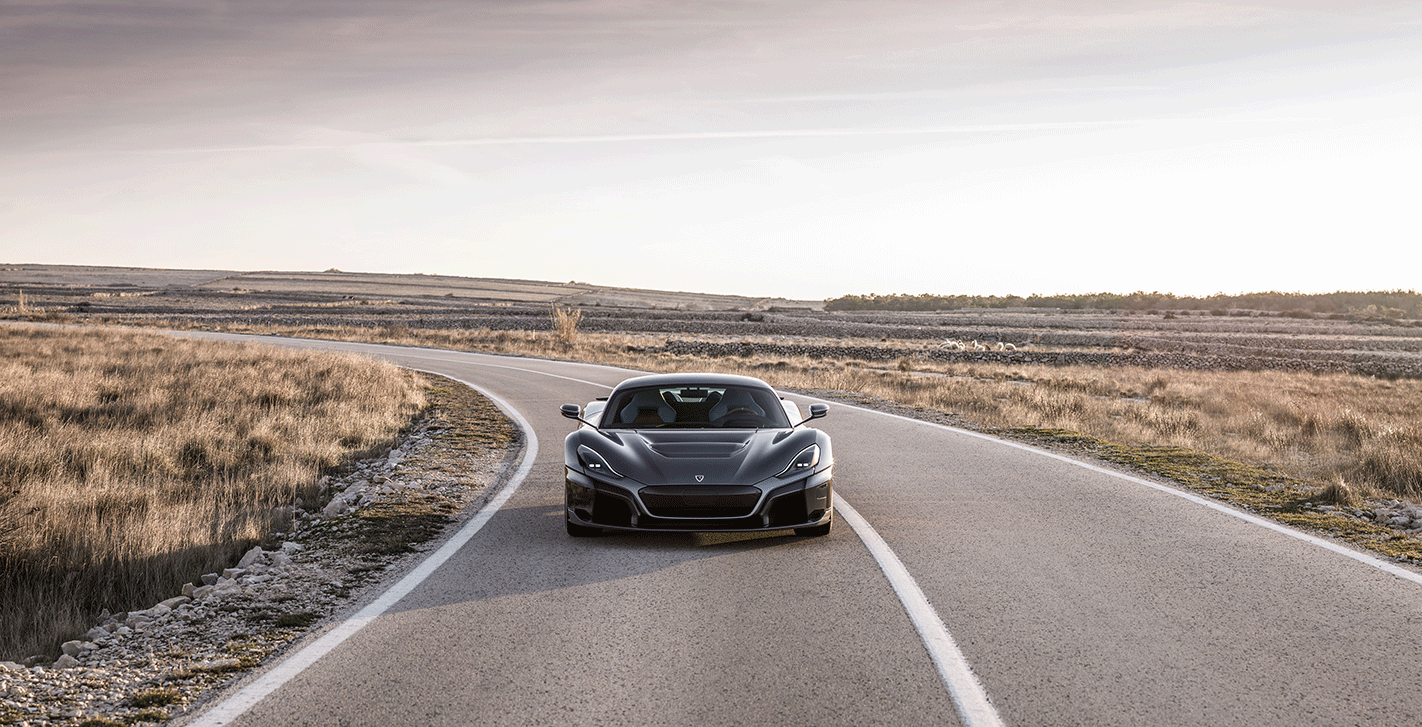
“The Concept_One was more of a learning project for us … the C_Two is light-years away,” says Rimac marketing chief Marta Longin as we wander the clinically clean facilities that are eerily devoid of cars. Claimed to make 1408kW, the C_Two promises new levels of electric performance, blitzing the 100km/h sprint in 1.97 seconds on the way to a Bugatti-like 412km/h. That it boasts a range of 550km reinforces the breadth of engineering beneath its active aero body shrink-wrapping what is claimed to be the single largest piece of carbonfibre on a production car; albeit one with a planned production run of just 150, tiny numbers even in the hypercar sphere. It will take more than four years to build the lot.
But it’s not complete cars that are the financial heartbeat, as Mate learned not long after registering Rimac in 2009. He describes the brand as “helping other companies to build interesting products and electrified, connected, smart vehicles”. Longin chimes in saying the vehicles are “a perfect showcase of what we can do”.
Tracing the Rimac history is radically different to any other brand. There was no bolshy concept car sprouting plans to knock Ferrari off its pedestal. No gazillionaire investor promising to shovel copious funds through the back door until success was guaranteed. And no mysterious alliance with a tech giant intent on showing car makers how to build cars. The one area Rimac did follow a more traditional path was in almost going broke. A Middle Eastern sheik promised investment money; the deal went sour. Mate was more visionary than finance guru. “We had no money, absolutely no money,” says Longin of those early years, recounting the time the electricity was cut off (somewhat of an issue for a manufacturer of electric vehicles). She blames it on various factors, including no investment rating for Croatia and the legal unknowns of doing business in a country not known for producing cars.
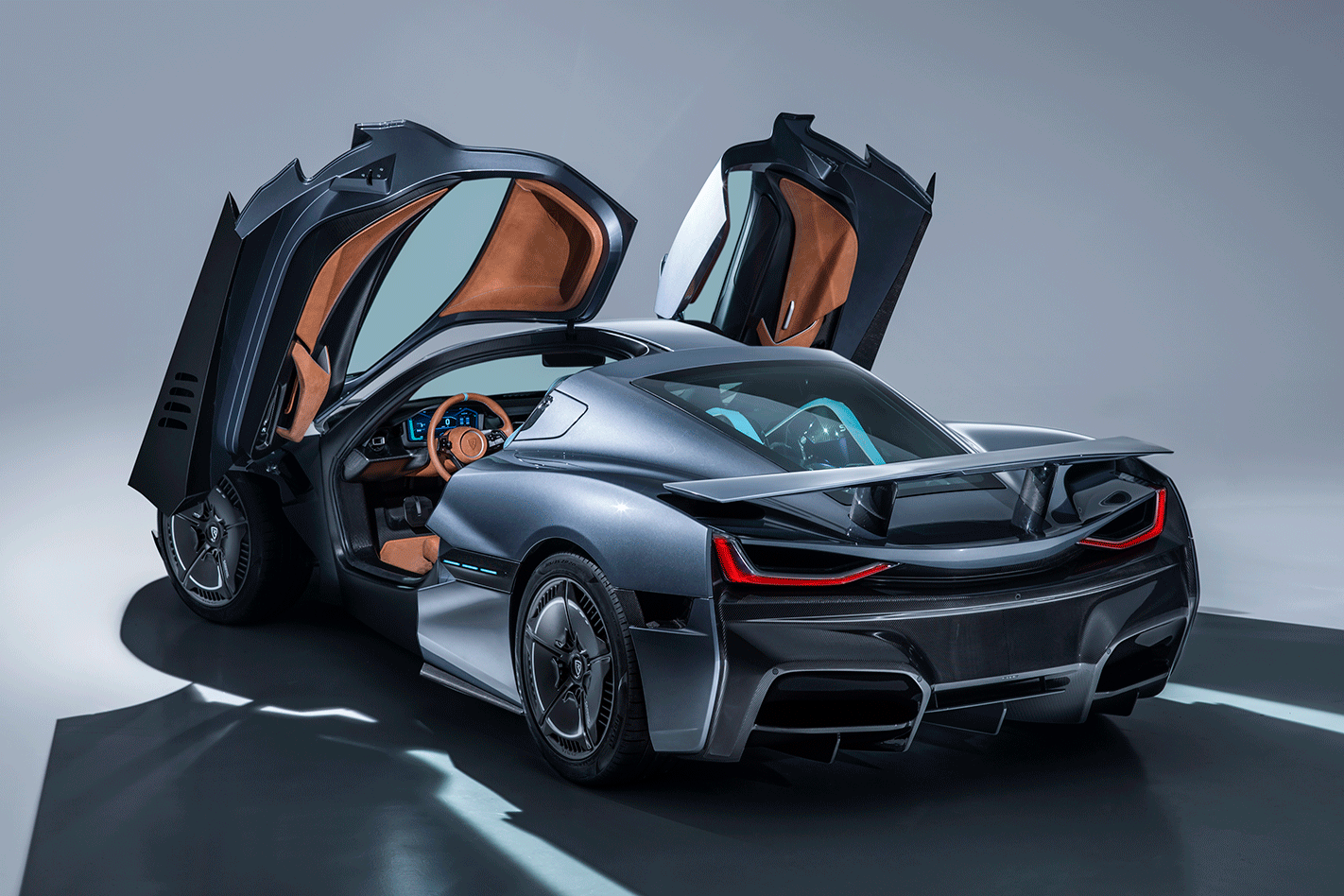
One thing Rimac was oozing from the start was innovation, something proudly on display in the trophy cabinet in the foyer. Wires and electronics poke from a glove that looks like something Arnold Schwarzenegger would have donned in Terminator. Called the i-Glove, it was one of Mate’s student creations of how he envisioned the keyboard and mouse could be replaced. Once he could drive, he turned his attention to going quick on wheels, making a garden variety 1980s BMW 323i into the hottest property on local race tracks (see sidebar p91). It was viral videos of his electric E30 making smokescreens that demonstrated the performance potential of electric motors and fired up YouTube. “These videos reached key decision makers and they came knocking, asking Mate how he did it and if he could do it for them,” Longin says.
Before he’d produced a single saleable vehicle, Mate had focused the company’s efforts on crafting the components and software he’d need to create his ultimate car. That justifies the hundreds working there. Every room I enter is buzzing with people, and the occasional dog, the Rimac workforce sitting at 550 and growing. Each employee has access to ‘relax’ rooms with beanbags and PlayStations. The sockless, headphoned folk of Silicone Valley would approve.
“The technology Mate wanted in the car wasn’t even available in the market,” explains Longin. “He wanted to revolutionise this whole industry and show people how exciting electric cars can be.”
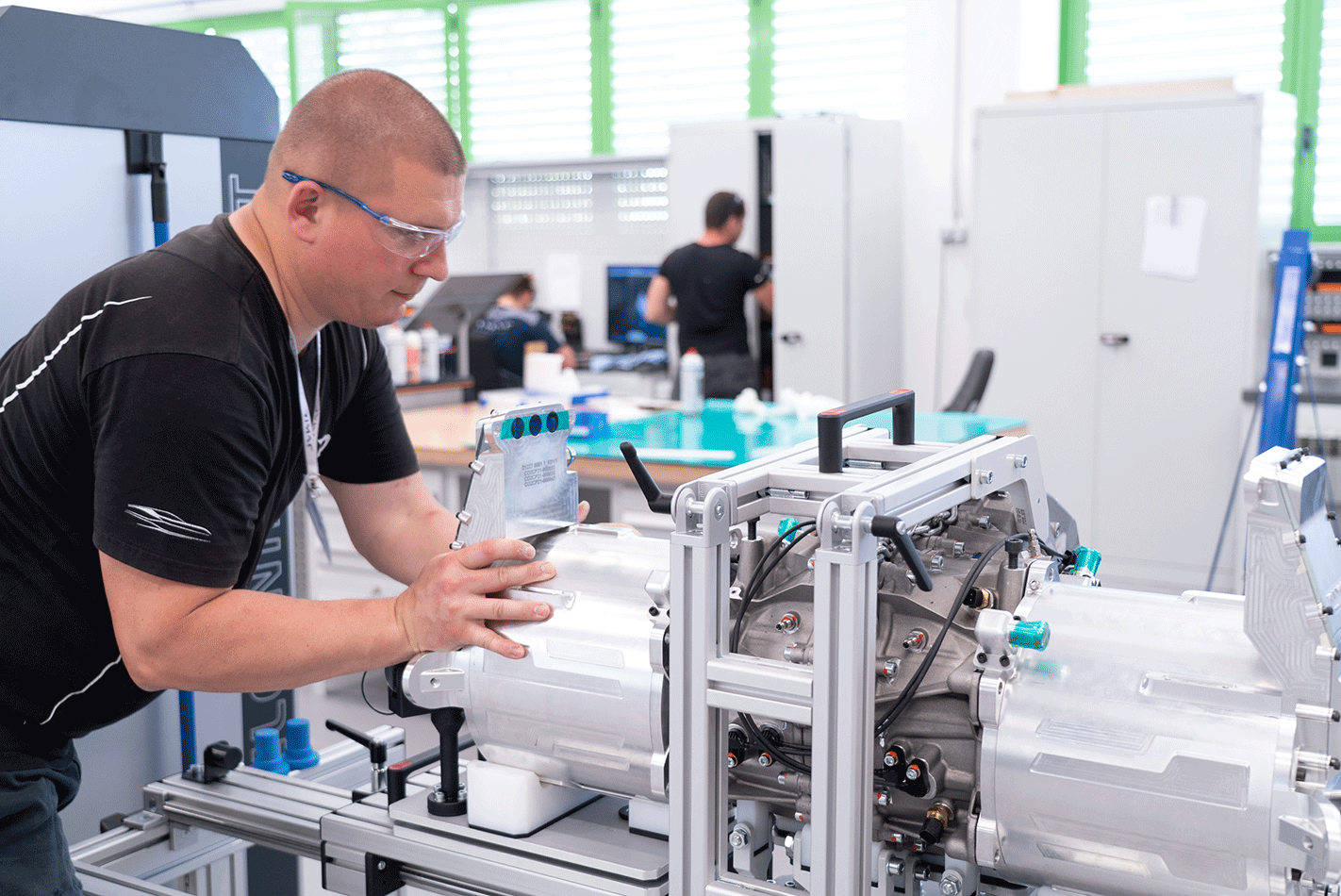
The business model is like no other, one where the vast bulk of revenue comes from outside car makers, the Rimac cars seemingly a sideshow. Not that the Rimac folk are sniffing for ways to fill their time. The place is tense with energy. Rather than robots and production lines there are rows of Dells and Lenovos and young folk tapping away with that chilled enthusiasm generation Z has nailed. On the factory floor you’re more likely to see battery components, crisply carved aluminium and immaculately finished carbonfibre fresh from the schmick autoclaves.
Longin hints of plans for Rimac models that could be produced in bigger numbers, relatively speaking. “We’re always going to be niche,” she stresses, reaffirming hypercars are the focus.
“Mate was very inspired by Tesla’s work and the electric motor and the potential of it,” she says, referencing the often gangly and experimental nature of early EVs that failed to capture mainstream love. Longin describes Mate as a “self-taught engineer” and “stubborn” while letting slip “lunatic” in describing his hectic style. It’s said in jest and with ample respect, but reinforces how different Rimac is to traditional car company chiefs.
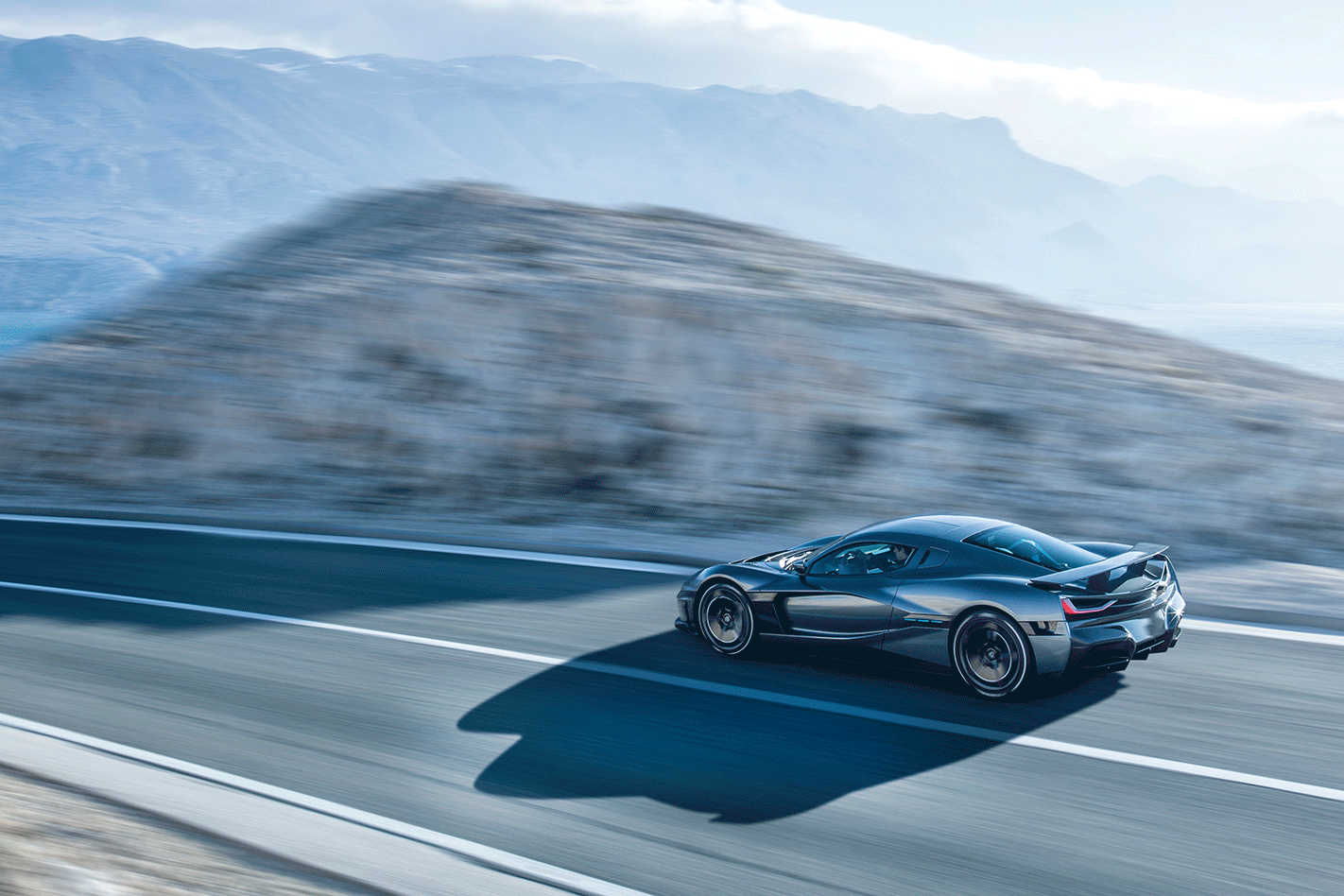
The five buildings spread over almost 10,000 square metres are bursting, with meandering hallways and stairways leading to added-on rooms. Rimac in its current guise has reached capacity. An all-encompassing new ‘campus’ is planned nearby, Mate vehemently resisting any notion of relocating to a country better known for car making. Longin says he’s not the sort of person who takes kindly to being told something can’t be achieved, a philosophy that seems to have set the template for the company; that, and his tireless efforts selling Rimac tech.
One big win was in 2016, when Mate received a call from a man he lists as “top of my hero list”, Christian von Koenigsegg, a Swede who realised his dream of creating highly desirable, extremely fast sportscars. Koenigsegg admired the engineering work of Rimac, which could provide the batteries and software for those big electric pulses needed for stupendous acceleration. It helped that Rimac was fresh from raising the second-place silverware in the gruelling Pikes Peak hillclimb the year before with a one-off racer driven by Japan’s Nobuhiro ‘Monster’ Tajima.
Not long after, Aston Martin chose Rimac to produce the beautifully fabricated carbonfibre battery packs for the Valkyrie. Pininfarina followed suit for its upcoming Battista. In May, Hyundai and Kia tipped in €80m (A$129m) to leverage Rimac’s expertise. “Its start-up roots and abundant experience collaborating with automakers combined with technological prowess makes Rimac the ideal partner for us,” said Hyundai executive vice-chairman Euisun Chung at the time.
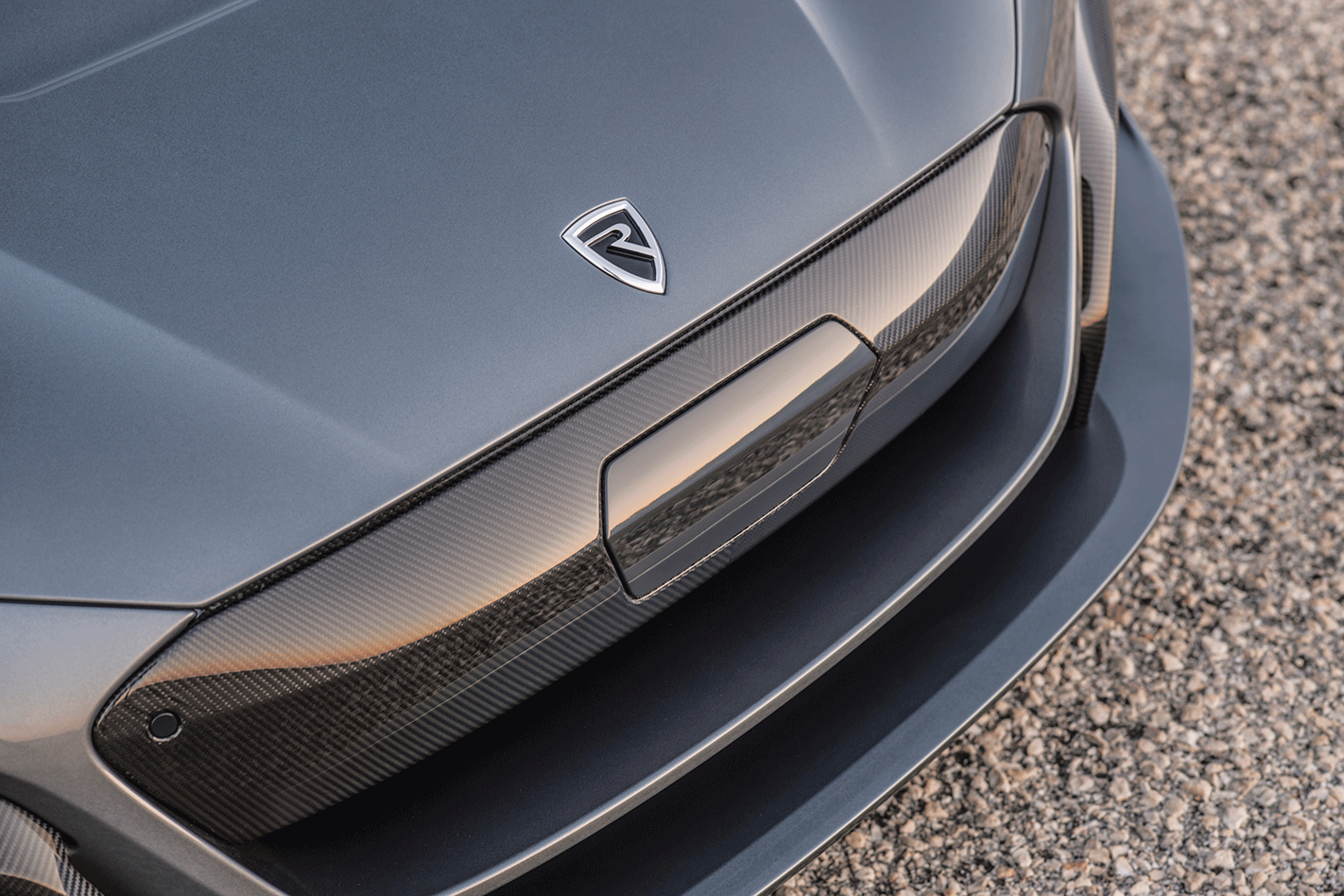
Other undisclosed car makers use Rimac components or software, including complete infotainment units.
The big question mark is Porsche, with that 15.5 percent stake. Where will the Rimac tech pop up in Stuttgart? The Taycan was largely completed before the Rimac deal was inked, and Porsche takes off-the-shelf Volkswagen Group componentry for its hybrid SUVs. Instead, it’s sports cars such as the 911 and Boxster where the Rimac expertise is being directed, something all but confirmed to Wheels in Frankfurt.
Croatian tech in the world’s most iconic sports car certainly would make a statement. All from a brand that started with a robotic glove, an electric BMW and a grand vision.
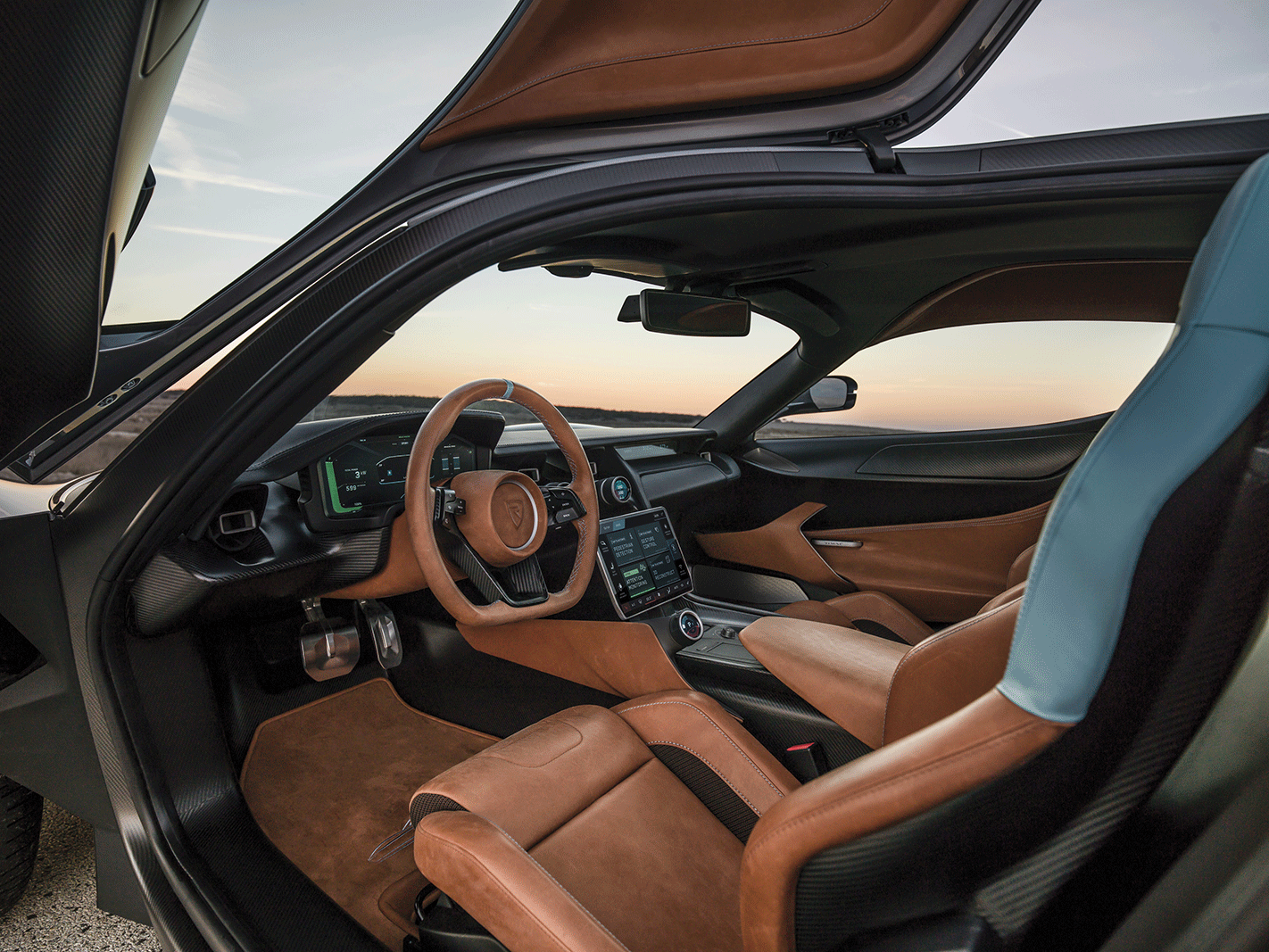
LIFE IN THE FAST LANE
A Kermit-green E30 BMW still holds the Guinness World Record for a quarter-mile time by an electric car, set in 2012 by Mate Rimac in his electrified 440kW rear-drive E30. The car covered the 400m strip in 11.85 seconds. That’s not far off a Porsche 911 GT3 RS, although the BMW was only travelling 122.23km/h when it crossed the finish line, an indication its initial acceleration was potent, its ability to maintain that enthusiasm into triple figures less so.
What was initially a 323i was converted after the engine gave up during a race meeting. Unable to afford a replacement engine, Mate looked at alternatives, electric being the obvious one to him.
“He was very inspired by Nikola Tesla,” says Rimac marketing manager Marta Longin on the Croatian-born inventor.
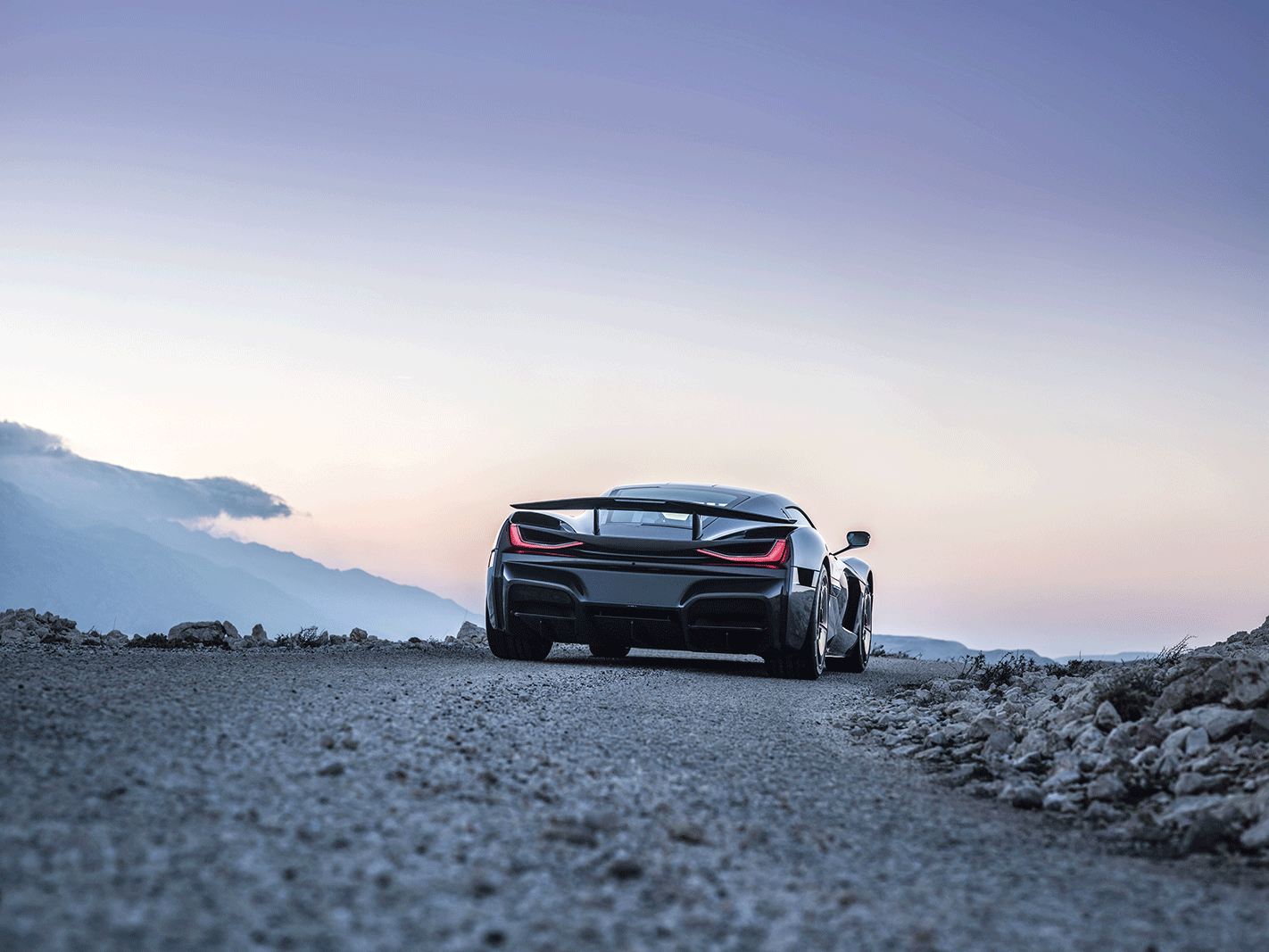
In a world of spark plugs and high-octane fuels, Mate’s electric BMW initially received the type of tepid welcome an Aussie politician would get. “Everybody laughed at him,” says Longin. “Everyone was saying ‘What are you doing with this washing machine, you’re never going to win anything, you’re never going to do anything with it’ … until he started winning.”
Rimac plans to restore the BMW that is four years older than him for the 10th anniversary, in 2021, of the Concept_One’s unveiling at the Frankfurt motorshow. “We just need to find time and people to work on that project,” Longin says.

